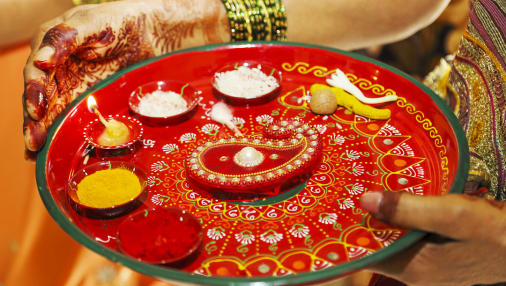Sharad Purnima – The Night of Divine Blessings and Full Moon Magic
Sharad Purnima, also known as Kojagari Purnima, is one of the most beautiful and spiritually significant nights in the Hindu calendar. It falls on the full moon day (Purnima) of the Hindu month Ashwin (September–October). This night marks the end of the monsoon season and the arrival of the harvest time. The moon appears at its brightest and closest to the Earth, illuminating the sky with divine light and energy.
Sharad Purnima is celebrated across India with great devotion, fasting, prayers, and cultural rituals. It is believed that on this sacred night, the moon showers Amrit (nectar) on the earth — a divine energy that blesses life with health, wealth, and prosperity.
The Significance of Sharad Purnima
Sharad Purnima holds immense spiritual, cultural, and scientific importance. In Hindu mythology, this is the night when Lord Krishna performed the Maha Raas Leela with Radha and the Gopis in Vrindavan. The divine love story of Krishna and Radha symbolizes the union of the soul with the Supreme.
It is also believed that Goddess Lakshmi, the goddess of wealth and prosperity, descends to Earth on this night to bless her devotees who remain awake and perform puja. The word Kojagari comes from the Sanskrit phrase “Ko Jagarti” meaning “Who is awake?”. It signifies that Goddess Lakshmi visits the homes of those who stay awake all night in prayer and meditation.
In many parts of India, Sharad Purnima is also associated with the healing power of moonlight. It is said that the rays of the moon on this night have medicinal and cooling effects on the body and mind. That’s why people prepare kheer (sweet rice and milk pudding) and place it under the moonlight overnight. This “moon-blessed kheer” is then consumed as Prasad the next morning.
Mythological Beliefs and Legends
- Krishna Raas Leela: According to the Bhagavata Purana, Lord Krishna played his flute on this night, attracting all the Gopis of Vrindavan. They danced together under the full moon, symbolizing the spiritual dance of love and devotion. It represents detachment from worldly desires and unity with the divine.
- Goddess Lakshmi’s Visit: Devotees believe that Goddess Lakshmi roams the Earth on Sharad Purnima night to see who is awake. Those who engage in prayer, chanting, or meditation are believed to receive her blessings of prosperity.
- Moon’s Nectar: In Ayurveda, it is believed that the moon’s rays on this night are rich in healing energy. Exposing food like milk or kheer to moonlight absorbs this energy, improving health and immunity when consumed.
How Sharad Purnima is Celebrated
The celebration of Sharad Purnima varies from region to region, but the essence remains the same — devotion, gratitude, and connection with the divine.
- Fasting and Puja: Many devotees observe a fast throughout the day. They worship Goddess Lakshmi and Lord Vishnu in the evening. Offerings include fruits, sweets, milk, and rice kheer.
- Kheer Under Moonlight: Families prepare kheer and keep it in silver or earthen pots under the open sky to absorb the moon’s nectar. The next morning, it is distributed as Prasad among family and friends.
- Staying Awake All Night: Devotees stay awake through the night, singing devotional songs, chanting mantras, and performing Lakshmi Puja. This vigil is believed to attract divine blessings.
- Community Gatherings: In villages and temples, people organize night-long bhajans (devotional songs) and cultural programs to celebrate the occasion.

